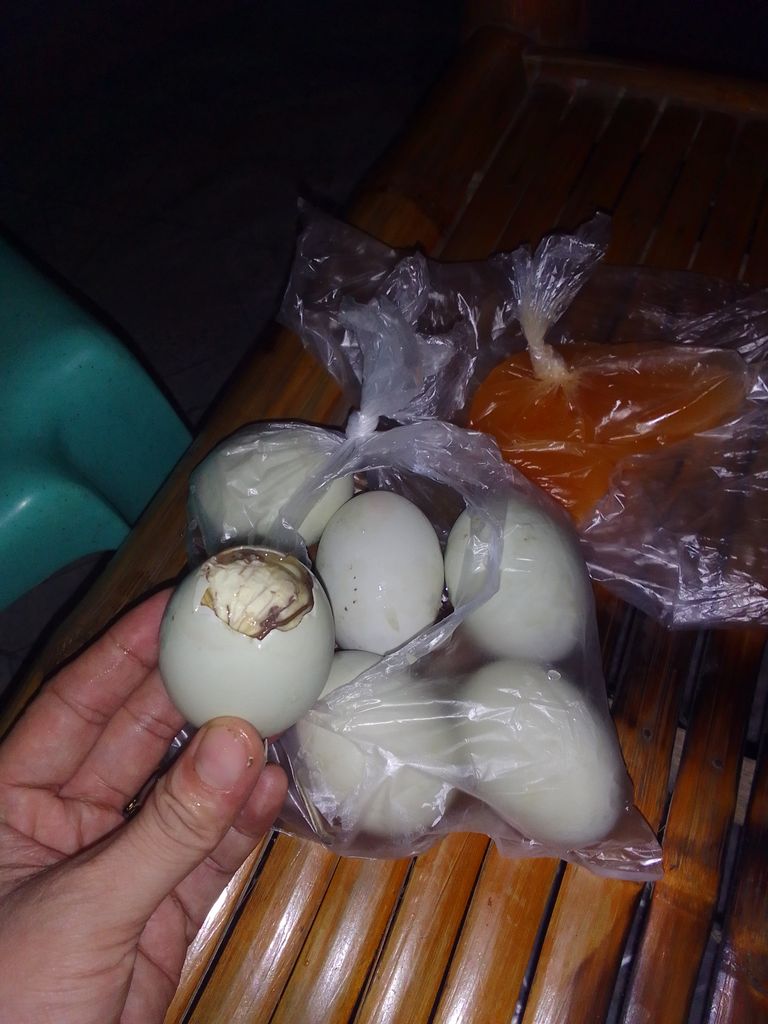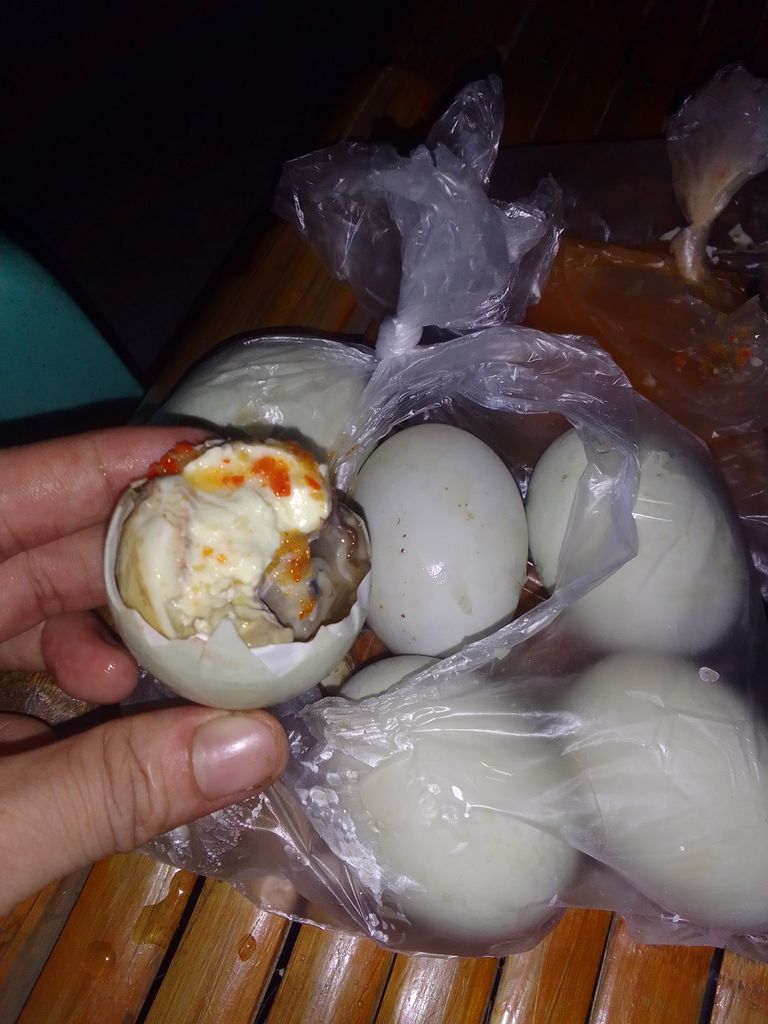Eating Balut!


A balut is a fertilized bird egg (usually a duck) which is incubated for a period of 14 to 21 days, depending on the local culture, and then steamed. The contents are eaten directly from the shell. Balut that is incubated for longer periods have a well-developed embryo and the features of the duckling are recognizable. The partially-developed embryo bones are soft enough to chew and swallow as a whole. The mallard duck (Anas platyrhynchus), also known as the "Pateros duck", is often used to make balut. Balut is a renowned dish due to its different developmental stages; some people prefer it when the duck embryo is still largely liquid, while others prefer it when it is more mature and has a chewier texture. A combination of savory, gamey, and rich characteristics can be found in the flavor, which makes it an acquired taste that many Filipinos treasure as a culinary treat and a part of their culture.
Balut is common street food in the Philippines and other localities, and is also sold in stores and malls. It is a relatively cheap source of protein and calcium.Balut was introduced to the Philippines by the Chinese in 1565or around 1885 and since then, balut has been included as a traditional part of the culture.Wherever Filipinos migrated for work, a large market for balut would develop. Controversies arose as knowledge of the food spread around the Southeast Asian countries and then globally.
People have questioned the ethics of eating balut.Ethical concerns are most often attributed to the presence of a fertilized embryo within the dish, given the fact that the egg has not yet hatched nor given the chance to hatch.
*PREPARATIONS:
Traditionally, the fertilized eggs are incubated in the sun or buried in sand, and stored in baskets to retain warmth. In order for the embryo to develop normally, it must be exposed to heat for the correct period of time, while ensuring that the temperature is not too hot to harm the eggs or too cold to permit growth. The embryo is extremely sensitive to high temperatures, and is easily killed upon cooking in the sun.After nine days, the eggs are held to a light, in a process called candling, to reveal the embryo inside. The production of balut depends on egg maturation cycles, where the egg begins developing and changes in texture. Throughout these various maturation periods, different temperatures are required to accentuate the specific egg and embryo characteristics.[citation needed] Within the first few stages of maturation, balut is known as "balut sa puti" ("wrapped in white") when it is white; the embryo inside is insufficiently developed to show a beak, feathers or claws, and the bones are undeveloped. These are made from very specific egg types, less than five days old and with no visible surface cracks.
*CHEMISTRY OF COOKING:
The duration of egg incubation is a matter of local preference. In the Philippines, balut is generally incubated for 14 to 18 days before being boiled for consumption. At about 14 to 16 days of incubation, the embryo floats on top of the egg white and yolk, and the balut is called "mamatong".For most balut makers, the ideal incubation is said to be 17 days old.
There are other versions of balut. In the Cambodian version, pong tea khon, the egg is incubated for 18 to 20 days. In the Vietnamese version, trứng vịt lộn, the egg is incubated for 19 to 21 days, when the embryo is old enough to be recognizable as a baby duck and has bones that will be firm but tender when cooked. Some men prefer to eat an embryo that is much more developed, "...so that it looks gross, because that is a way to prove your manhood."
During the cooking process, changes occur in the food chemistry of balut, such as the sol dispersion of water molecules within the embryonic fluid.This liquid becomes the broth for the solid which are parts of the duck within the egg. Although balut mainly consists of protein, fat is present and is emulsified within the fertilized embryo. After cooking, it can be considered a protein gel (depending on the length of time it was cooked). Heating high-protein food such as balut can cause the chemical changes to take place and fully or partially denature proteins, causing the surface to become thick and causing an irreversible gel protein to form.
Temperature has a significant impact on the final taste and texture of the cooked balut. Warm temperatures of 29–30 °C (84–86 °F) change the taste and texture of the yolk by making it more grainy. This can be attributed to the changes in proteins, and their partial denaturation, during the heating and incubation process.[13] When boiling or cooking eggs, the white of the egg tends to solidify because the proteins are denatured in an irreversible reaction and turn from transparent to an opaque white. Physical and chemical changes in the final balut product can also be attributed to microbial infections and the rate that microbes infect the balut at various stages.
There are many chemical changes that occur inside the duck egg as it is being processed, which can vary depending on how or what it is cooked with. While boiling, added salt can contribute to a number of chemical changes; it seems to increase the proportional weight of egg white within the shell, which can be due to the weight differences between the embryo and the egg white itself.Added salt can also increase the hardness of the egg yolk and affect the overall texture of the final balut product. Other chemical changes observed in nutrient content of the duck egg as it is processed are a slight decrease in the amount of available amino acids, water-soluble vitamins and minerals after the processing is complete.
*Have A Wonderful Thursday To All Of Us!🤗😍
THANK YOU FOR ALWAYS SUPPORTING MY BLOGS!💖🥰